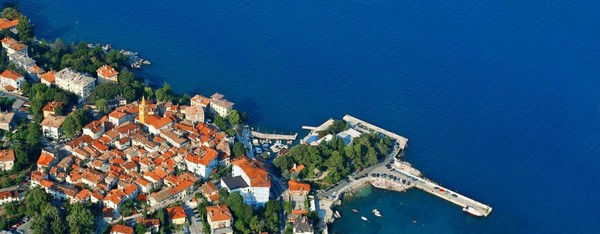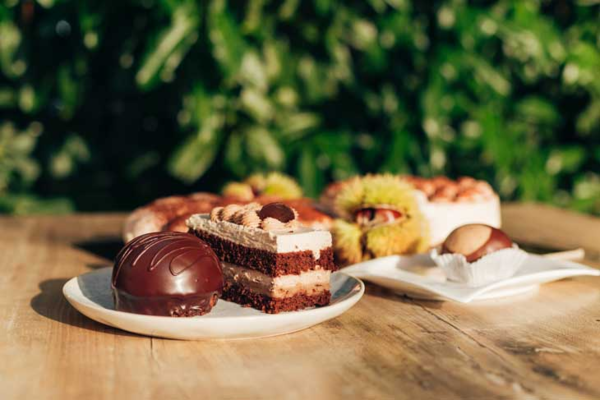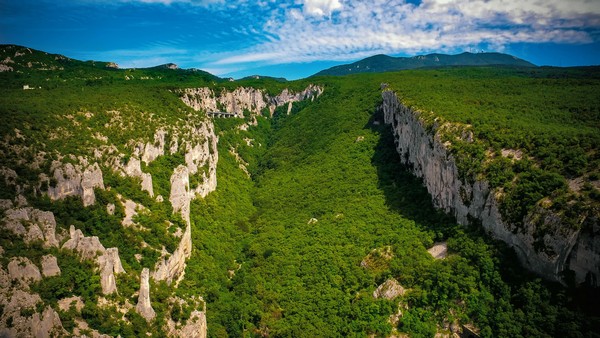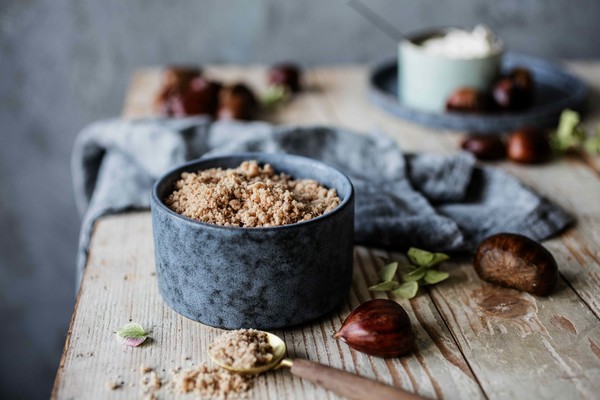Lovran and October’s Marunada festival

[아츠앤컬쳐] 로브란은 크로아티아 이스트리아반도의 동쪽, 우치카산이 크바르네르만으로 이어지는 곳에 자리한 작은 해안 마을이다. 아드리아해 북서쪽의 오파티야 리비에라에, 산바람과 바닷바람이 어우러지는 온화한 기후로 연중 내내 매력적인 여행지이자 유명한 휴양지다.
로브란은 이스트리아 동해안에서 가장 오래된 정착지 중 하나로, 7세기에 첫 이름은 라우리아나라였다. 이 이름은 월계수 나무와 관련이 있으며, 전설에는 기원전 1세기에 로마 명장 아그리파의 별장이 있었다고 전해진다. 항구를 중심으로 성장한 로브란은 중세에 조선업과 해상 무역으로 이름을 알렸다. 이후 경제 중심지가 이동하면서 주춤했다가 19세기에 오파티야 리비에라가 오스트리아-헝가리 제국 귀족들의 건강·휴양지로 각광받으며 다시 주목을 받게 된다.
로브란 구시가지는 지금도 중세 도시 구조를 간직하고, 좁은 돌길과 작은 광장, 그리고 둘러싸인 중정이 이어져 있으며, 항구와 마을 중심을 연결하던 유일한 성문인 슈티비차 게이트가 남아 있다. 광장의 중심에 12세기에 세워진 성 게오르기오성당은 후기 중세 프레스코화와 글라골 문자 비문을 보존하고 있다. 이 외에도 14세기 성 요한 세례자교회, 선원들과 관련이 깊었던 성 니콜라스교회, 묘지 가장자리에 자리했던 성 삼위일체교회 등이 있다.
19세기 말~20세기 초, 오파티야 리비에라에는 세세션 양식과 절충주의 양식의 화려한 해변 별장 100여 채가 들어섰다. 로브란에는 1912년 지어진 호텔 브리스톨(당시 이름은 엑셀시어)이 여전히 영업 중이며, 옛 그랜드 호텔 로브라나는 현재 유명한 정형외과 병원으로 사용되고 있다. 또한 1911년에 확장된 약 12km의 평탄한 해안산책로 룽고마레가 로브란에서 시작해 이카, 오파티야, 볼로스코까지 이어진다.
구시가지에는 1845년 작센의 프리드리히 아우구스투스 2세가 우치카산 식물 연구차 방문한 기념 동판이 있으며, 오스트리아-헝가리 북극 탐험대(1872~74)에서 프란츠 요제프 랜드를 발견하고 일부 탐사했던 현지 선원 비츠코 팔미치를 기리는 표식도 있다. 또한 로브란은 현대 초현실주의 화가 찰스 빌리히의 고향으로, 그의 작품은 백악관, 바티칸, 유엔 본부 등 세계 곳곳의 주요 기관에 소장되어 있다.

로브란은 연중 다양한 문화·음악·오락 행사를 개최한다. 특히 올해 50회를 맞는 10월의 전통 마루나다 축제가 가장 활기찬데, 온화한 기후 아래 우치카 산자락에서 자라는 달콤한 밤(마루니)의 수확을 기념하며, 이 축제 기간에는 좁은 골목에 밤꿀부터 아이스크림까지 다양한 밤 특산물을 파는 노점들이 들어선다. 이 축제는 영국 가디언지가 선정한 ‘유럽의 주목할 만한 가을 미식 축제’ 중 하나로 소개되기도 했다. 행사에서는 군밤, 케이크·크레페·아이스크림 같은 디저트, 밤요리와 브랜디·맥주 등 음료를 맛볼 수 있으며, 음악 공연, 문화·스포츠 프로그램도 함께 진행된다.
온화한 기후, 벨 에포크 시대의 빌라들, 바닷가를 따라 이어진 룽고마레 산책로, 건강과 웰니스 전통이 어우러진 로브란은 사계절 내내 문화·자연·휴식을 즐길 수 있는 매력적인 소도시다.

Lovran and October’s Marunada festival
Lovran is a small seaside town in Croatia, on the eastern side of the Istrian Peninsula where Mount Učka descends into Kvarner Bay. It is part of the famous Opatija Riviera, and this north-western corner of the Adriatic enjoys a microclimate, sea air tempered by upland breezes, making Lovran an attractive year-round destination and noted health resort.
Lovran is one of the oldest settlements on the eastern Istrian shore. It was first mentioned in the 7th century as Lauriana. According to local legend, Marcus Vipsanius Agrippa maintained a residence here in the 1st century BC. The settlement grew around a protected harbour and earned a reputation for shipbuilding and maritime trade in the Middle Ages. In the 19th century the Opatija Riviera emerged as a health and leisure destination for the Austro-Hungarian elite.
Lovran’s Old Town retains a medieval plan: tight stone lanes, small squares and enclosed cortiles. The Stubica Gate is the sole preserved town gate, once linking harbour and civic core. The 12th-century Parish Church of St George anchors St George’s Square and preserves late-medieval frescoes and Glagolitic inscriptions. Nearby stand the Church of St John the Baptist (14th century) with frescoes, the roadside Church of St Nicholas, historically tied to sailors, and the simple Church of the Holy Trinity, once on the cemetery edge.
In the late 19th and early 20th centuries, Opatija Riviera elegance arrived with over a hundred seaside villas in Secessionist and eclectic styles, set amid landscaped gardens. In Lovran, the 1912 Hotel Bristol (opened as the Excelsior) remains in service today, while the former Grand Hotel Lovrana now operates as a well-known orthopaedic hospital. The Lungomare coastal promenade, extended to this stretch in 1911, offers about 12 kilometres of level walking between Lovran, Ika, Opatija and Volosko.
In Lovran’s Old Town, a plaque records the 1845 visit of Frederick Augustus II of Saxony, who studied the flora of Učka, and another commemorates Vicko Palmić, a local sailor among the “Quarneroli” on the Austro-Hungarian Arctic expedition that discovered and partly explored Franz Josef Land (1872–74). Lovran is also the birthplace of contemporary surrealist Charles Billich, whose works are held by the White House, the Vatican, and United Nations Headquarters, among many other collections.

Throughout the year, Lovran hosts a broad programme of cultural, musical, and entertainment events. October is especially lively as the town holds its traditional Marunada festival. Thanks to its mild climate, the Lovran area is known for maruni, sweet chestnuts that grow on the slopes of Učka, and the town traditionally marks the harvest. Narrow streets fill with stalls selling maruni specialities, from chestnut honey to ice cream. This year, Lovran celebrates the 50th Marunada. The festival has gained international attention, including recognition by The Guardian among notable European autumn food events. The programme blends tastings and music with a broader cultural and sporting schedule, and visitors can try roasted chestnuts; desserts; savoury dishes; and chestnut-based drinks, including brandy and beer.
With a mild climate, Belle Époque villas, Lungomare at the water’s edge, and a strong health and wellness tradition, Lovran offers a compact mix of culture, nature and relaxation year-round. October’s Marunada festival brings a unique, vibrant street celebration to Lovran and enables visitors to fully immerse themselves in local tradition.

글 | 로레타 베르토사 쿠센 Loreta Bertosa-Kusen
주영국크로아티아대사관 전권대사
Minister Plenipotentiary Embassy of Croatia in London

